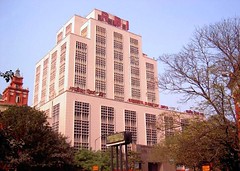In Q1 2024, over 1.30 lakh dwellings were sold in the top seven cities, according to ANAROCK Research. This is the highest sales in the previous ten years.
The Reserve Bank of India (RBI) has decided to maintain the repo rate at 6.5 percent, which will keep the housing demand strong and the monthly interest rates on home loans unchanged for the time being, according to real estate developers and experts.
The Monetary Policy Committee (MPC) of the Reserve Bank of India decided on April 5 to maintain the repo rate at its current level for the seventh consecutive meeting.
Experts in real estate say that by making this change, the housing boom will continue on its current trajectory and prospective homeowners can move forward.
It was anticipated that the RBI would maintain the repo rates at 6.5 percent, according to Anuj Puri, Chairman of ANAROCK Group. “The choice to preserve the status quo will ensure that the current momentum in residential real estate continues unhindered. Prospective homeowners planning a purchase will move forward with assurance. Despite steadily rising prices, the top 7 cities have seen phenomenal housing sales in recent quarters. Home loan borrowers will benefit from the appropriate and much-needed respite that the RBI’s stable repo rate will offer,” Puri stated.
The top seven cities saw overall home sales in Q1 2024 of over 1.30 lakh units, the highest quarterly sales in the previous ten years, according to ANAROCK Research. Mumbai, Delhi NCR, Bangalore, Chennai, Hyderabad, Kolkata, and Pune are among the cities. In the past year, there has been a notable increase in average residential prices in these cities; the difference between Q1 2023 and Q1 2024 is between 10 and 32 percent.
The RBI’s decision to maintain the repo rates at 6.5 percent, according to Manju Yagnik, senior vice president of NAREDCO Maharashtra, expands the favorable circumstances for homebuyers as those who are thinking about buying can still take advantage of low-interest rates on home loans.
“The housing market is expanding rapidly, and to control the market and boost consumer confidence overall, stable home loan rates are crucial. In light of growing costs, homeowners will greatly benefit from and receive much-needed relief from the RBI’s decision. Yagnik, vice chairperson of Nahar Group, stated that this decision “lays the foundation for the housing sector’s long-term stability and expansion and boosts the optimistic attitude currently permeating the market.”
Purchasing a home with greater accessibility
In agreement, Pradeep Aggarwal, the flounder and chairman of the publicly traded real estate company Signature Global (India) Limited, stated, “ A table repo rate gives the average homebuyer credibility and assurance that they can be assured while taking home loans.” This stability has a direct bearing on the real estate market’s growth, which in turn significantly improves India’s GDP and future growth prospects.”
“Managing price stability in the face of inflationary pressures is highlighted by the RBI’s steadfast position. Future homeowners will benefit from lower borrowing costs, which will make homeownership more accessible, according to Anshuman Magazine, Chairman and CEO of CBRE’s operations in India, Southeast Asia, the Middle East, and Africa.







